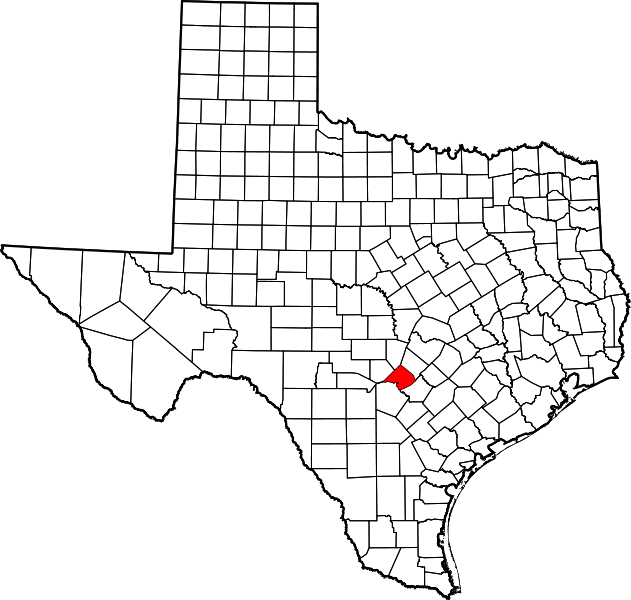Habitat
Eurycea tridentifera was originally discovered in 1965 inhabiting the caves of Comal county, Texas. Today, caves around the entire state of Texas, excluding the southern tip, house these organisms.
 The
Comal blind salamander is well adapted to life in a cave. Caves
have different "zones" that are determined by sunlight amount.
The cave entrance zone is located at the mouth of the
cave which receives the most sunlight and is very similar to its
surrounding habitat. The twilight zone follows the cave
entrance zone; it receives some sun, but less temperature
variation. The middle zone of the cave receives no
sunlight, and very little temperature change. Finally, the
dark zone is the most unchanging part of the cave. It
receives no sunlight and temperature is constant. Eurycea
tridentifera reside in this dark zone of the cave.
The
Comal blind salamander is well adapted to life in a cave. Caves
have different "zones" that are determined by sunlight amount.
The cave entrance zone is located at the mouth of the
cave which receives the most sunlight and is very similar to its
surrounding habitat. The twilight zone follows the cave
entrance zone; it receives some sun, but less temperature
variation. The middle zone of the cave receives no
sunlight, and very little temperature change. Finally, the
dark zone is the most unchanging part of the cave. It
receives no sunlight and temperature is constant. Eurycea
tridentifera reside in this dark zone of the cave.
Honey Creek Cave, which is located just north of San Antonio, Texas, is a prime spot for this species to live. This cave possesses a great dark zone in which the comal blind salamander can thrive. Also, the dark zone of the Honey Creek Cave has many standing freshwater pools. Eurycea tridentifera are aquatic and flourish in freshwaters that have a temperature of 18-20 degrees Celsius. As well as cool waters, these specimens live within and on large rocks that are cooled by the dark and cold temperatures of the caves they are found in (amphibia).
Underground limestone caves provide all the habitat factors necessary for Comal blind salamanders, which is why the majority of them are found in these kinds of caves (Herps). In the state of Texas, limestone caves are mostly found in Edward’s Plateau, a large, vast part of of the state that is mostly savanna. Freshwater springs flow through this plateau and drain into the underground caves which supplies the salamanders with the freshwater they need (Iucn).
Previous Page: Classification
Next Page: Adaption
Lost? Go Home
